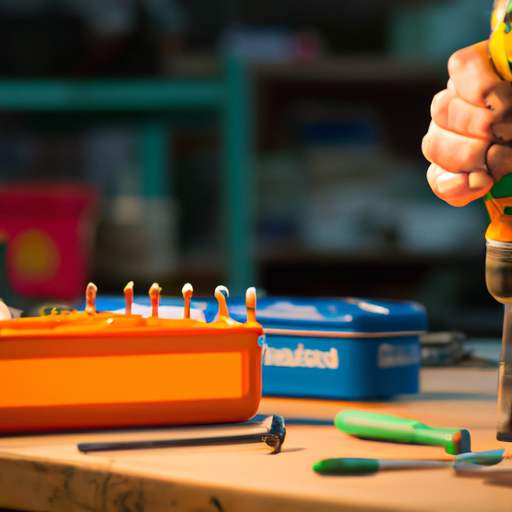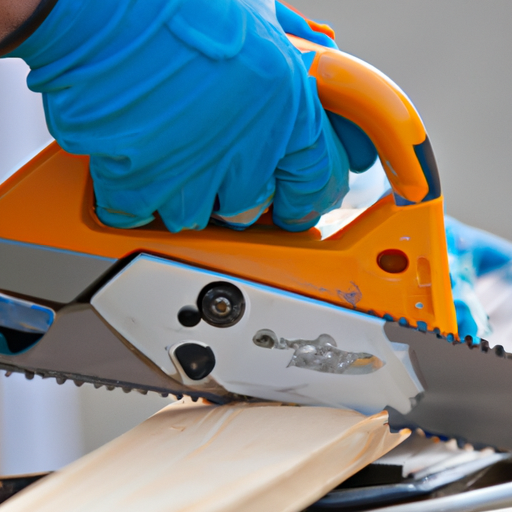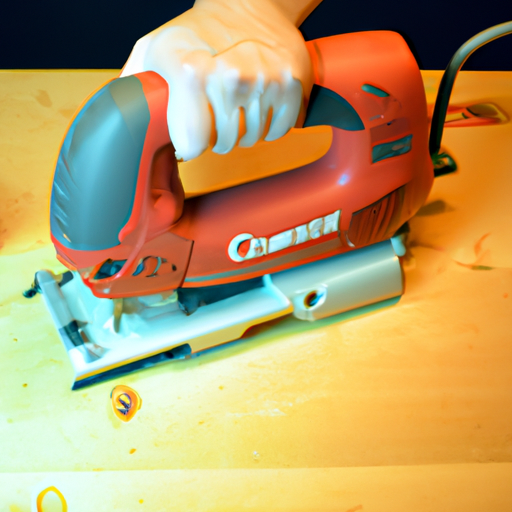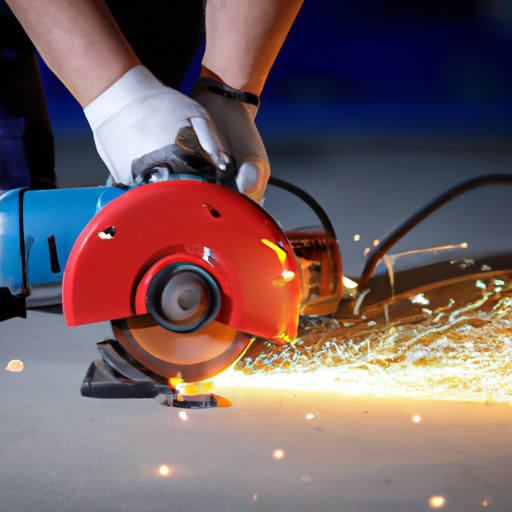Have you ever wondered how to safely operate a battery-powered screwdriver? We’ve got you covered! In this article, we’ll walk you through the steps you need to take to ensure that you use your battery-powered screwdriver safely and effectively. Whether you’re a seasoned DIY enthusiast or a beginner, it’s essential to know how to use this tool properly to avoid accidents and get the job done right. So, let’s dive in and learn more about the safe operation of a battery-powered screwdriver.
First and foremost, it’s crucial to familiarize yourself with the user manual that comes with your battery-powered screwdriver. This manual provides important information about the tool’s specifications, features, and safety precautions. It’s always a good idea to read the manual thoroughly before using the screwdriver to understand how it works and any potential hazards. Moreover, make sure to check the battery’s charge level before starting your project. A low battery charge may result in ineffective screwdriving or accidents due to sudden loss of power. To avoid this, charge the battery fully or replace it if necessary.
When using a battery-powered screwdriver, it’s important to wear appropriate personal protective equipment (PPE). Safety glasses, gloves, and closed-toe shoes should be worn to protect your eyes, hands, and feet from any potential hazards. Additionally, make sure to choose the correct screwdriver bit for the job at hand. Using the wrong type or size of the bit can damage the screw, the surface you’re working on, or even the screwdriver itself. The right bit will ensure a secure grip and prevent slippage, reducing the risk of accidents. So, stay tuned for our upcoming article that will provide you with more tips and tricks for safe and effective use of a battery-powered screwdriver.
Introduction
Operating a battery-powered screwdriver can be a convenient and efficient way to tackle various tasks. Whether you’re assembling furniture, conducting DIY projects, or working on repairs, a battery-powered screwdriver can make your job easier. However, it is important to prioritize safety and take necessary precautions to prevent accidents or injuries. In this article, we will guide you on how to safely operate a battery-powered screwdriver, covering everything from choosing the right screwdriver to proper maintenance and troubleshooting.
Choosing the Right Battery-Powered Screwdriver
Before you start using a battery-powered screwdriver, it’s important to choose the right one for your needs. Here are some factors to consider:
Consider the power and speed
When selecting a battery-powered screwdriver, consider the power and speed it offers. Different tasks require different levels of power and speed, so make sure to choose a screwdriver that matches your requirements. Higher voltage screwdrivers are generally more powerful and better suited for heavy-duty tasks, while lower voltage ones are ideal for everyday tasks.
Look for ergonomic design
Ergonomics play a crucial role in ensuring a comfortable and safe operating experience. Look for a screwdriver that features an ergonomic design, with a comfortable grip and easy controls. This will reduce the strain on your hand and arm during prolonged use and minimize the risk of developing discomfort or injuries.
Check the battery life and charging options
Battery life is an important aspect to consider, especially if you’ll be using the screwdriver for extended periods. Look for a screwdriver with a battery that has sufficient runtime for your intended tasks. Additionally, consider the charging options available. Some screwdrivers come with fast-charging capabilities or additional batteries, which can be convenient when you need to quickly recharge or swap batteries during your work.

Inspecting the Battery and Screwdriver
Before you start using a battery-powered screwdriver, take a few moments to inspect both the battery and the screwdriver itself. This will help ensure safe and efficient operation. Here’s what to do:
Make sure the battery is fully charged
Before using the screwdriver, ensure that the battery is fully charged. A low battery can affect the screwdriver’s performance and lead to inefficient operation. Check the battery indicator, if available, or refer to the manufacturer’s instructions on how to determine the battery’s charge level.
Check for any damage or loose parts
Inspect the screwdriver for any signs of damage or loose parts. Check the housing, handle, and attachments for cracks or other visible defects that could affect the screwdriver’s performance or compromise your safety. Ensure all parts are securely in place before proceeding.
Ensure the screwdriver is clean and free from debris
A clean screwdriver will function better and be safer to use. Before starting your tasks, wipe down the screwdriver with a clean cloth to remove any dust or debris that may have accumulated. Ensure that the chuck and bit holder are free from any obstructions that could hinder the proper attachment of bits.
Preparing the Work Area
Preparing your work area is essential to ensure a safe and efficient working environment. Here are some steps to follow:
Clear the area of any obstacles
Before you begin using the screwdriver, clear the work area of any obstacles or clutter. Remove any unnecessary items that could hinder your movement or cause accidents. This will give you the space and freedom to operate the screwdriver without any obstructions.
Secure any loose materials
If you’re working with loose materials such as boards, panels, or components, make sure they are securely fastened or clamped down. This will prevent them from moving or shifting during screwing, reducing the risk of accidents or damage.
Ensure proper lighting and ventilation
Proper lighting is essential to ensure accurate screwing and prevent strain on your eyes. Make sure the work area is well-lit, either naturally or through the use of artificial lighting. Additionally, ensure proper ventilation to avoid discomfort or breathing issues when working in enclosed spaces.

Positioning Yourself Correctly
Proper positioning when using a battery-powered screwdriver is crucial for both safety and efficiency. Follow these guidelines:
Stand in a stable and balanced position
Stand with your feet shoulder-width apart and ensure that you have a stable and balanced posture. This will provide you with more control over the screwdriver and minimize the risk of losing your balance or toppling over during operation.
Keep a firm grip on the screwdriver
Maintain a firm grip on the screwdriver’s handle throughout the operation. This will help you maintain control and prevent the screwdriver from slipping out of your hand, potentially causing accidents or damage.
Maintain proper posture to prevent strain or injury
Maintaining proper posture while using the screwdriver is essential to prevent strain or injury. Keep your back straight and avoid excessive bending or reaching. If possible, position your work at a comfortable height to reduce the strain on your back, neck, and arms.
Using the Battery-Powered Screwdriver
Now that you’re ready to use the battery-powered screwdriver, follow these steps for safe and efficient operation:
Insert the appropriate bit or attachment
Choose the appropriate bit or attachment for your task and securely insert it into the screwdriver’s chuck. Ensure that the bit is properly seated and locked in place before proceeding. Using the wrong bit size or type can lead to inefficient screwing or damage to the material.
Apply gentle pressure when starting to screw
When starting to screw, apply gentle pressure to guide the screw into the material. Avoid excessive force, as it can cause the screw to strip or damage the material. Let the screwdriver’s power and speed do the work for you, using just enough pressure to maintain control.
Avoid over-tightening or stripping the screws
Be mindful not to over-tighten the screws, as it can damage both the screws and the material. Use the screwdriver’s torque control, if available, to prevent over-tightening. Additionally, pay attention to any resistance or unusual sounds, as it may indicate that the screw is not properly inserted or there is an issue with the screwdriver.
Safety Measures and Precautions
To ensure your safety while operating a battery-powered screwdriver, follow these safety measures and precautions:
Wear safety goggles to protect your eyes
When using a screwdriver, there is a risk of flying debris or particles. Protect your eyes by wearing safety goggles or glasses with impact-resistant lenses. This will prevent any potential eye injuries from occurring during operation.
Use ear protection for prolonged or loud operations
If you’ll be using the battery-powered screwdriver for prolonged periods or working in a noisy environment, consider using ear protection such as earplugs or earmuffs. Prolonged exposure to loud noises can cause hearing damage, so it’s important to take precautions.
Keep fingers and other body parts clear of the rotating parts
Avoid placing your fingers or any other body parts near the rotating parts of the screwdriver, such as the chuck or bit. This will prevent accidental contact and potential injuries. Be aware of your hand placement and maintain a safe distance from the rotating parts at all times.
Proper Maintenance and Storage
To keep your battery-powered screwdriver in good condition and ensure its longevity, proper maintenance and storage are necessary. Here’s what you should do:
Clean the screwdriver and bits after use
After using the screwdriver, take the time to clean it and the bits. Wipe down the screwdriver with a clean cloth to remove any dust or debris. Use a soft brush or compressed air to remove any remaining particles from the screwdriver’s crevices. Clean the bits using an appropriate cleaning solution or by wiping them down with a cloth.
Store the tool in a dry and secure location
When not in use, store the screwdriver in a dry and secure location. Moisture can damage the tool and its battery, so avoid storing it in damp areas. Additionally, keep the screwdriver away from direct sunlight and extreme temperatures, as these can affect the performance and lifespan of the battery.
Regularly check and replace worn-out parts
Periodically inspect the screwdriver for any signs of wear or damage, such as worn-out bits, damaged or frayed cords, or loose connections. Replace any worn-out or damaged parts immediately to ensure safe and efficient operation. Follow the manufacturer’s recommendations for replacement parts or consult a professional if necessary.
Dealing with Battery-Powered Screwdriver Issues
Even with proper maintenance, there may be times when you encounter issues with your battery-powered screwdriver. Here are some steps to take:
Troubleshoot common problems
If you’re facing issues with the screwdriver, such as power loss, erratic operation, or charging problems, consult the troubleshooting section in the user manual. Many common problems have simple solutions that can easily be addressed by following the manufacturer’s instructions.
Consult the manufacturer or user manual
If troubleshooting doesn’t resolve the issue, consult the manufacturer or refer to the user manual for further guidance. The manufacturer’s customer support team can provide you with specific troubleshooting steps or direct you on how to proceed. The user manual may also contain additional information or tips to resolve the problem.
Seek professional assistance if necessary
If the issue persists or if you’re unsure about how to proceed, it’s best to seek professional assistance. Contact a certified technician or take the screwdriver to an authorized service center for inspection and repair. Avoid attempting any repairs yourself, as it may void the warranty or cause further damage.
Common Mistakes to Avoid
To ensure safe and efficient operation, avoid these common mistakes when using a battery-powered screwdriver:
Using the wrong bit size or type
Using the wrong bit size or type can lead to inefficient screwing or damage to the material. Always choose the appropriate bit for your task and ensure it is securely attached to the screwdriver.
Forgetting to turn off the screwdriver after use
After completing your task, remember to turn off the screwdriver and remove the battery. Leaving the screwdriver on or with the battery attached can pose a safety risk and drain the battery unnecessarily.
Applying excessive force that could damage the material
Avoid applying excessive force when screwing, as it can cause the screws to strip or damage the material. Allow the screwdriver’s power and speed to do the work for you, using only enough pressure to maintain control.
Conclusion
By following these guidelines, you can safely and efficiently use a battery-powered screwdriver for various tasks. Remember to choose the right screwdriver for your needs, inspect the battery and screwdriver before use, and prepare your work area properly. Position yourself correctly, use the screwdriver with care, and take necessary safety measures. Proper maintenance and storage will ensure the longevity and performance of your screwdriver. Lastly, if you encounter any issues, troubleshoot, consult the manufacturer or user manual, and seek professional assistance if necessary. With these precautions in mind, you can confidently operate a battery-powered screwdriver while prioritizing safety and preventing accidents or injuries.



